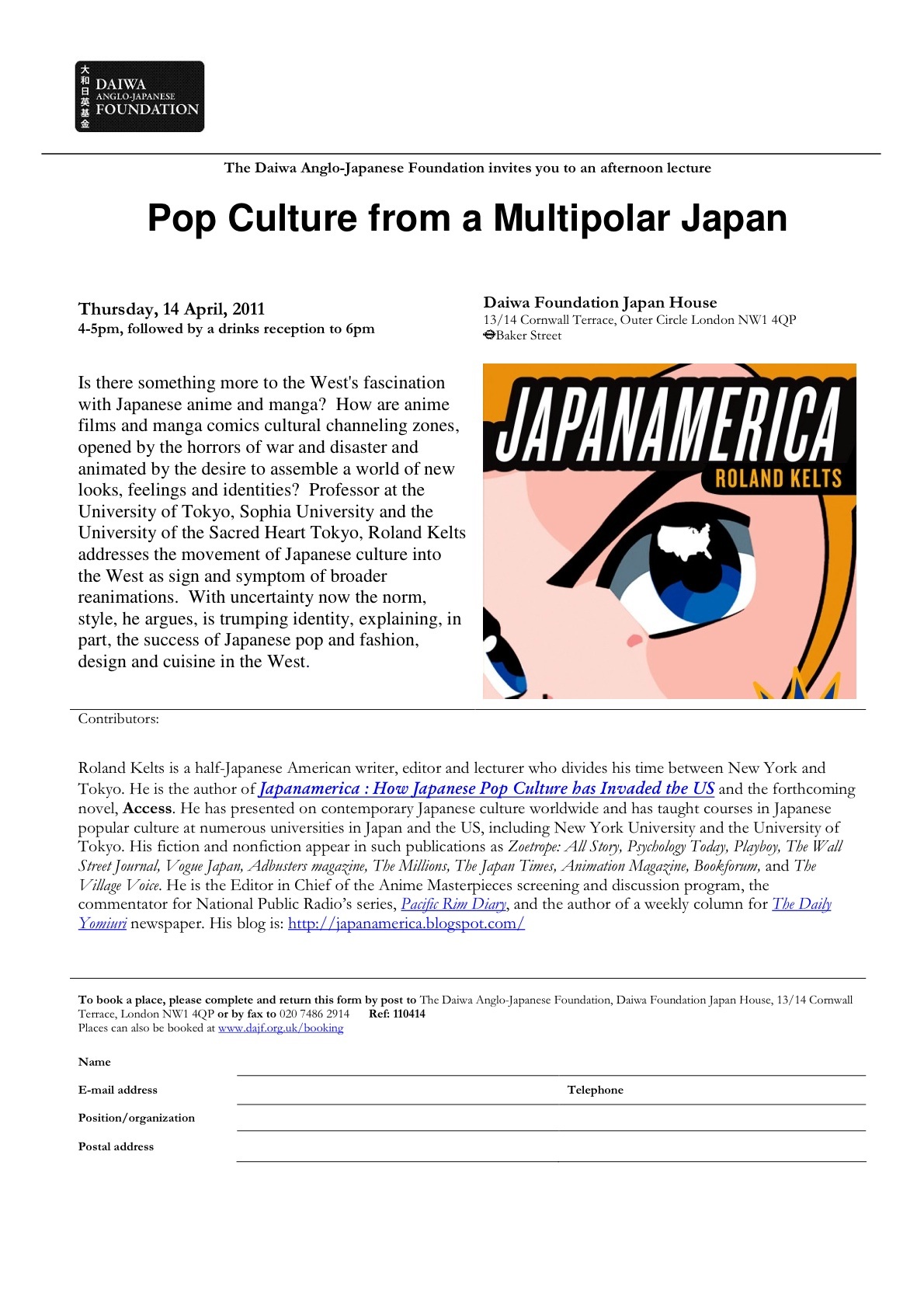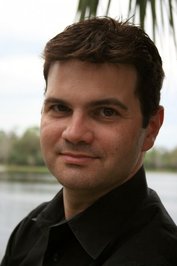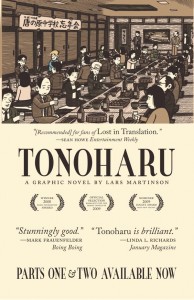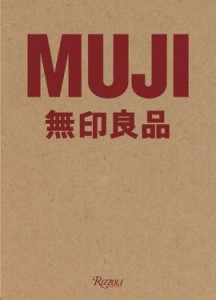Event: JET alum author Roland Kelts to speak in London April 14
*******
Attention JETAA UK! Join Roland Kelts (Osaka-shi, 1998-99), author of Japanamerica, at The Daiwa Anglo-Japanese Foundation in London on Thursday, April 14 for a talk on “Pop culture from a Multipolar Japan.” Talk is 4-5 pm followed by drinks reception to 6pm.
Note: If you plan on attending, please register for the event at http://www.dajf.org.uk/events/booking-form
Notable JET Alums: D.H. Cermeño, author of “Rising Sunsets”
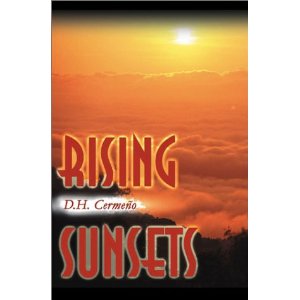 The below was shared by Hiroshima JET alum Angela Perrone, herself a travel writer, who recently met another JET alum book author in the course of her research for JetWit on JET local travel writing.
The below was shared by Hiroshima JET alum Angela Perrone, herself a travel writer, who recently met another JET alum book author in the course of her research for JetWit on JET local travel writing.
JET Alum Author: D.H. Cermeño (Hiroshima-ken)
Book: Rising Sunsets (click to purchase via Amazon)
Book trailer on youtube at: http://goo.gl/A4P8a
Website: www.dhcermeno.com
Below is a synopsis of the book along with Cermeno’s biography.
Synopsis:
Rising Sunsets is an enlightening journey through the mind of David Fletcher, a bright and ambitious young man who is determined to conquer the world and prove his unsupportive father wrong. When reality strikes and nothing works out as expected, an unusual opportunity to go to Japan to teach English to schoolchildren presents itself. There, he discovers his true self and finds an inner strength and independence he never knew existed. Throughout the story, David uncovers Japanese culture and easily embraces the traditions until suddenly, those age-old beliefs stand in the way of his happiness. And, through an unexpected encounter with love, the course of his life is changed forever.
A third generation Florida native, D.H. Cermeño worked in Japan as an English teacher for a year after graduating from Loyola University in New Orleans with a degree in Broadcast Production. Upon returning to the United States, he earned his M.B.A. from Crummer Graduate School at Rollins College and is a Database Marketing Manager in the hospitality industry. In his spare time, he writes, entertains, and volunteers in the local community and supports local theatre. D.H. has traveled extensively throughout Europe, Asia, and Central America and especially loves visiting his extended family in the northern part of Spain. He currently resides in Winter Park, FL. Rising Sunsets is his first book.
Click here to see a list of other JET alum authors and their works. (If you know of others not included in the list, please email jetwit [at] jetwit.com.)
NYT Column: Take Back the Trash by JET alum Bruce Feiler
“Take Back the Trash“ is a thoughtful column on whether to throw out food in your refrigerator by JET alum Bruce Feiler, author of Learning to Bow, Walking the Bible and several other best-sellers including his recent book The Council of Dads:
http://www.nytimes.com/2011/03/06/fashion/06ThisLife.html?pagewanted=1&_r=2
JETs in the News: Lars Martinson featured in Japan Times article on ex-pat comics
********
JET alum/cartoonist Lars Martinson (Fukuoka-ken 2003-2006), author of the graphic novels Tonoharu: Part Two and Tonoharu: Part 1, is the focus (along with Adam Pasion, author of the Sundogs anthologies) of a thoughtful Japan Times article by Gianni Simone on comics about Japan “that tell it like it is.”
Here’s the link to the article: http://search.japantimes.co.jp/cgi-bin/fl20110205a1.html
And below are a few excerpts about Martinson from the article:
The comic life of expats in Japan
Americans Lars Martinson and Adam Pasion tell it like it is with cutting-edge manga
By GIANNI SIMONE Special to The Japan Times
Tales of expat life in Japan all too often get blown out of proportion and quickly become picaresque adventures that little resemble real life.
**********
Luckily for us, many comic artists who have lived here seem to be more level-headed and have tackled the subject with a more realistic, no-nonsense approach.
**********
As the title suggests, “Tonoharu: Part Two” is not Martinson’s first foray in the field of expat comics: He self-published the first volume of this four-part saga in 2008 thanks to a grant from the prestigious Xeric Foundation.
Martinson, 33, first arrived in Japan in 2003 to work as an assistant language teacher, and spent the next three years working at a junior high school in a small town in Fukuoka Prefecture. His second stint in this country was in 2008 when he studied East Asian calligraphy under the auspices of a two-year research scholarship from the Japanese government.
Travel had played a pivotal role in his life (he had lived in Thailand and Norway as well), so when he came up with the idea of producing a graphic novel, he decided to make foreign travel a central theme.
“I planned from the start to turn my Japanese experience into a comic,” Martinson says, “even though I didn’t want it to be a mere autobiographical story. So I chose a 20-something American like me as the protagonist, but added a fictional group of eccentric expatriates living in the same rural Japanese town.”
At times living in the middle of nowhere was a challenge. Still, Martinson has no regrets about those three years spent in Kyushu.
“I’m actually a city slicker,” confesses Martinson, “and would love to live in a huge city in Japan at some point. Also, I’m sure that expat communities are awesome, but they can also separate you from the native population. When you live out in the country, you don’t have the option to just hang out with other Westerners, and this can force you to get involved in the host culture in ways you probably wouldn’t otherwise.”
Click here to read the full article: http://search.japantimes.co.jp/cgi-bin/fl20110205a1.html
Click here to read more JetWit posts about Lars Martinson:
Click here for Lars Martinson’s official blog/website: http://larsmartinson.com
NYTimes column: “Dominating the Man Cave” by JET alum Bruce Feiler
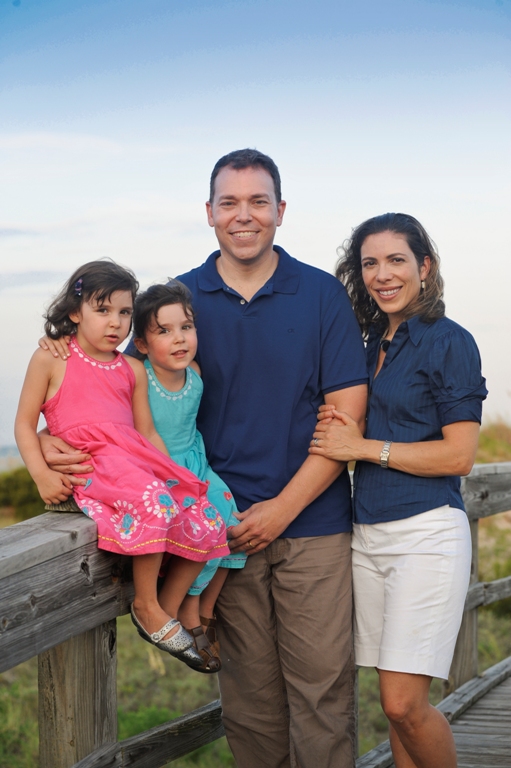 A thoughtful column in today’s New York Times on the topic of ESPN and man culture by JET alum Bruce Feiler, author of Learning to Bow, Walking the Bible and several other best-sellers including his recent book The Council of Dads:
A thoughtful column in today’s New York Times on the topic of ESPN and man culture by JET alum Bruce Feiler, author of Learning to Bow, Walking the Bible and several other best-sellers including his recent book The Council of Dads:
http://www.nytimes.com/2011/02/06/fashion/06ThisLife.html?_r=1&src=twrhp
JET alum Bruce Feiler’s TED talk on The Council of Dads (video)
JET alum Bruce Feiler, author of Learning to Bow, Walking the Bible and several other best-sellers including his recent book The Council of Dads, recently spoke in connection with the TED lecture series:
Sake World e-newsletter by John Gauntner (January 2011)
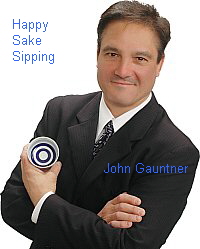 The January 2011 issue of the Sake World e-newsletter by JET alum and the leading non-Japanese sake expert in the world, John Gauntner (a.k.a. “The Sake Guy”), is now available online. In this issue:
The January 2011 issue of the Sake World e-newsletter by JET alum and the leading non-Japanese sake expert in the world, John Gauntner (a.k.a. “The Sake Guy”), is now available online. In this issue:
1. Greetings
2. The Suffix “-shu”
3. Announcements and Events: Sake professional course in Japan
4. Sake Education Central
Additional links:
Justin’s Japan: Interview with author Hideo Dan on ‘Lipstick Building’
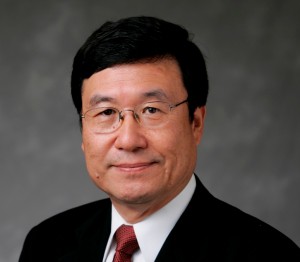
- Meet ‘Lipstick Building’ author Hideo Dan at Manhattan’s Kinokuniya Bookstore Saturday, Dec. 11. (Courtesy of Hideo Dan)
By JQ magazine’s Justin Tedaldi (CIR Kobe-shi, 2001-02) for Examiner.com. Visit his NY Japanese Culture page here to subscribe for free alerts on newly published stories.
Hideo Dan is a vice president and attorney at law of a New Jersey-based healthcare company who is now a debut author. Published by NY Seikatsu Press, Lipstick Building is a fast-paced suspense novel based on the author’s 30-year real-life experience in New York as a shosha (trading company) man and a corporate attorney with an international law firm.
Kenji Kadota, who works for a Japanese trading company in New York, is introduced at a party to Suzanna, a beautiful businesswoman from Peru. She proposes a big business opportunity to Kenji—an attractive prospect of exporting Japanese machinery to a major Peruvian construction company. Is this a great business chance, or is something ominous ahead? The story develops quickly into intrigue and adventure, with Kenji and Suzanna crisscrossing through South America and Europe, providing readers entertainment and thrills to the end.
The author will be the subject of a special talk and book signing event Saturday, Dec. 11 at Manhattan’s Kinokuniya Bookstore. I caught up with him to learn more.
How did you come to the U.S.?
The first time I came to the U.S. was in 1971, when I attended Indiana University for a year to study journalism. I could not land a job in journalism, so I started to work for Nissho-Iwai, a trading company, a.k.a. shosha, upon graduation from Osaka University with a law degree. In 1979, Nissho-Iwai sent me to its New York subsidiary as legal manager.
Lipstick Building is based on your three decades of experience at a Japanese trading company. How long did it take to write this book?
Actually, I was with the trading company for 14 years, seven years each for Japan and New York. After that, I left the company and joined a law firm in New York, having had passed the New York Bar Exam while I was with Nissho-iwai American Corporation. After almost nine years with the law firm, I joined Eisai, a Tokyo-based pharmaceutical company, as general counsel for its U.S. operations.
It took nearly one and a half years to write this book. I was able to do it since I was asked to manage Eisai USA Foundation, a charitable organization on the part-time basis, two years ago.
What is your personal experience with Peru? Are there any other international experiences that helped your writing?
Unfortunately, I have never been to Peru—I was planning to do so this year but because of the flood at Machu Picchu, my trip was cancelled. So I did lots of research on Peru on Google and at a library. I had met a very attractive Peruvian student when I was attending Indiana University, which gave me some inspirations for this book. In fact, Europe (Spain and Switzerland) plays a much larger part in this story than Peru. I have been to Spain and Switzerland on business and pleasure on numerous occasions and have been attracted by culture and scenery in those countries. Especially in Spain—I was fascinated by flamenco and its dancers. Flamenco is an important element in this novel.
What are the big differences between working at a trading company in Japan versus the U.S.? Did these differences shape the story?
At the trading company in New York and also at the law firm where I worked, naturally I interacted heavily with non-Japanese people, colleagues and clients, which constantly reminded me of cultural and linguistic differences between Japan, the U.S. and many other different cultures. As someone who is very curious about anything, I enjoyed learning those differences on daily basis. At the same time, I got impressed with striking similarities at a deep human level. My book certainly reflects those experiences and observations.
Click here for the rest of the interview.
Sake World e-Newsletter by John Gauntner (December 2010)
 The December 2010 issue of the Sake World E-mail Newsletter by JET alum and the leading non-Japanese sake expert in the world, John Gauntner (aka “The Sake Guy”), is now available online. In this issue:
The December 2010 issue of the Sake World E-mail Newsletter by JET alum and the leading non-Japanese sake expert in the world, John Gauntner (aka “The Sake Guy”), is now available online. In this issue:
1. Greetings
2. Rice to Sake: How Much?
3. Did You Know?
5. Sake Basics
6. Announcements and Events: Sake Professional Course in Japan
7. Sake Education Central
Additional Links:
James Kennedy reviews “Pluto killer” book for Wall Street Journal
James Kennedy (Nara-ken, 2004-06), author of the acclaimed young adult novel The Order of Odd-Fish, has a great review in the Wall Street Journal of a sugoku omoshiroi book titled, How I Killed Pluto, And Why It Had It Coming by professor of astronomy Mike Brown.
Here’s the link: http://online.wsj.com/article/SB10001424052748704243904575630683559145518.html#articleTabs%3Darticle
Lars Martinson interviewed in Hero Magazine re “Tonoharu: Part 2”
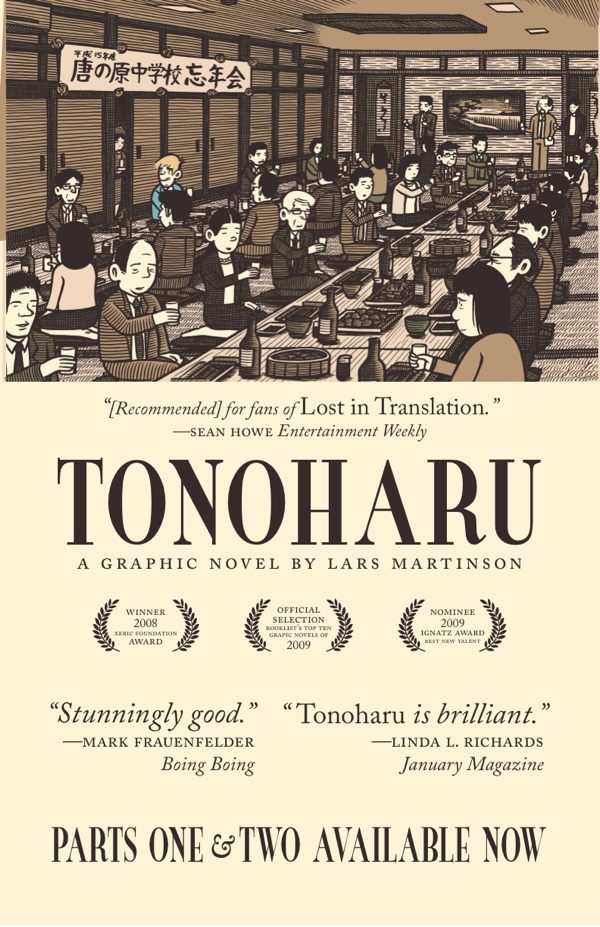 There’s a nice interview with JET alum Lars Martinson in Hero Magazine. Lars recently published Tonoharu: Part 2, a graphic novel about teaching English in Japan that follows up on the success of Tonoharu: Part 1.
There’s a nice interview with JET alum Lars Martinson in Hero Magazine. Lars recently published Tonoharu: Part 2, a graphic novel about teaching English in Japan that follows up on the success of Tonoharu: Part 1.
Here’s the link to the article: http://heromagazine.org/?p=189
Culture Spreader: John Gauntner – The Sake Guy
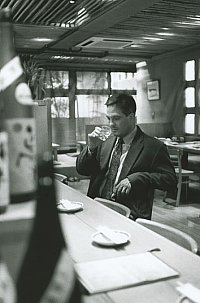 Culture Spreaders is a new feature intended to shine a spotlight on JET alums involved in spreading and sharing Japanese culture in their home countries. If you know of a good JET alum for a future post, just e-mail jetwit [at] jetwit.com tell us why you think that alum is a Culture Spreader. (Self-nominations welcome too.)
Culture Spreaders is a new feature intended to shine a spotlight on JET alums involved in spreading and sharing Japanese culture in their home countries. If you know of a good JET alum for a future post, just e-mail jetwit [at] jetwit.com tell us why you think that alum is a Culture Spreader. (Self-nominations welcome too.)
JET alum and leading sake expert John Gauntner (aka “The Sake Guy“) has established himself as the leading non-Japanese sake expert in the world. See, e.g., this 2009 Japan Times article titled, “Nihonshu evangelist preaches heady mix of culture, taste.”
Not only does John spread the sake gospel through numerous appearances and events in the U.S. and elsewhere, but he also offers a Sake Professional Course in various locations to teach others how to be sake experts and evangelizers. As a result, there are now four sake-only specialist shops in the U.S.–True Sake (San Francisco), Sakaya (NYC), SakeNomi (Seattle) and The Sake Shop (Honolulu)–and the owners of all four attended John’s Sake Professional Course for the purpose of starting their respective businesses.
For his work spreading Japanese sake culture around the globe (and helping the Japanese sake industry expand its markets), John Gauntner is hereby recognized by JetWit as a serious “Culture Spreader.”
Editor’s note: In the “JET’s a small world” department, it turns out that both John Gauntner and last week’s “Culture Spreader” Bruce Rutledge are both originally from Cleveland and previously have met at SakeNomi in Seattle, where Bruce currently lives.
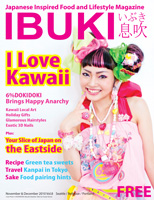 Culture Spreaders is a new feature intended to shine a spotlight on JET alums involved in spreading and sharing Japanese culture in their home countries. If you know of a good JET alum for a future post, just e-mail jetwit [at] jetwit.com tell us why you think that alum is a Culture Spreader. (Self-nominations welcome too.)
Culture Spreaders is a new feature intended to shine a spotlight on JET alums involved in spreading and sharing Japanese culture in their home countries. If you know of a good JET alum for a future post, just e-mail jetwit [at] jetwit.com tell us why you think that alum is a Culture Spreader. (Self-nominations welcome too.)
Seattle-based Bruce Rutledge (MEF Program Chiba-ken, 1985-87) is the Editor-in-Chief of Ibuki, the “Japanese Inspired Food and Lifestyle Magazine” for the Seattle/Bellevue/Portland area. (www.ibukimagazine.com)
I was in Seattle this past weekend and (thanks to JETAA Pacific Northwest President Sandra Sakai) was able to pick up a copy of the “I Love Kawaii” issue, which featured “6%Dokidoki Brings Happy Anarchy,” “Your Slice of Japan on the Eastside,” a recipe for green tea sweets, a travel article titled “Kanpai in Tokyo” and a sake article titled “Food pairing hints.” The magazine also includes an extensive Japan-related business directory for the area, including restaurants, galleries, grocery stores, etc.
In addition to his work with Ibuki, Bruce is also the founder of Chin Music Press, which has put out a number of Japan-related books and takes pride in book design.
For all his work with Ibuki and Chin Music Press, Bruce is undoubtedly a major JET alum “Culture Spreader.”
Lars Martinson’s “Tonoharu: Part Two” reviewed by BoingBoing
JET alum Lars Martinson recently released his follow-up graphic novel Tonoharu: Part 2. Here’s the review by Mark Frauenfelde of BoingBoing:
“Tonoharu Part Two: Excellent graphic novel about an English teacher in Japan”: http://www.boingboing.net/2010/11/10/tonoharu-part-two-ex.html
(Editor’s note: I have a copy of Tonoharu: Part 1, and every time I show it to a fellow JET alum and they start reading it, they end up reading the whole thing (which takes about 15 minutes). It’s really terrific and very unique.)
New York’s Japan Society hosts design summit, MUJI minds
By JQ magazine’s Justin Tedaldi (CIR Kobe-shi, 2001-02) for Examiner.com. Visit his NY Japanese Culture page here to subscribe for free alerts on newly published stories.
Architecture, interior design and innovative household items take center stage at Japan Society in November through its upcoming lectures The Design Difference and America Meets MUJI.
For The Design Difference, Japan Society’s U.S.-Japan Innovators Network will gather architecture and design visionaries Yoshiharu Tsukamoto of Atelier Bow-Wow and John Peterson of Public Architecture to exchange ideas in a bid to help solve some of the world’s most vital social problems. Moderated by Designers Accord’s globally recognized innovator Valerie Casey, The Design Difference is part of the Innovators Network’s two-day exchange program in partnership with Designers Accord, Common Ground Community and the Brownsville Partnership, and GOOD magazine.
In its 30 years of existence, celebrated retailer MUJI has made an impact as a global standard for goods of simplicity, practicality and sustainable design. True to its name—shorthand for mujirushi, or “no brand,” reflecting its lack of labels or elaborate packaging—MUJI is mighty, with over 100 outlets outside of Japan. InAmerica Meets Muji, internationally acclaimed designers Naoto Fukasawa, Kenya Hara and John Maeda discuss the concepts behind the creation, design and essence of MUJI.
Along with Jasper Morrison, Fukasawa and Hara are the co-authors of the new coffee table book MUJI. Published by Rizzoli New York, the tome explores through illuminating essays and hundreds of photos MUJI’s inner workings via its founding principle to develop new and simple products at reasonable prices by making the best use of materials while minimizing their impact on the environment. For the MUJI faithful, Fukasawa and Hara will be on hand after Wednesday’s talk for a special book signing reception.
Click here to read the rest of the article.

